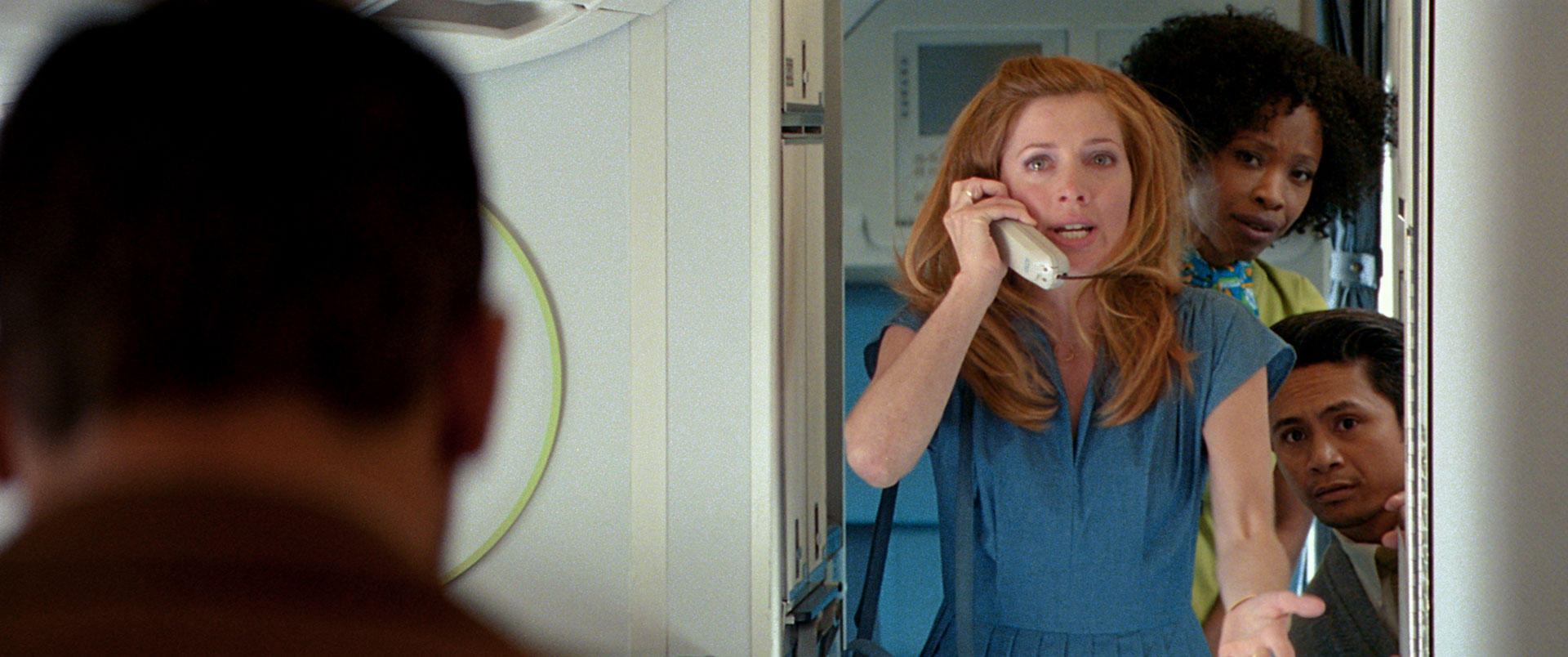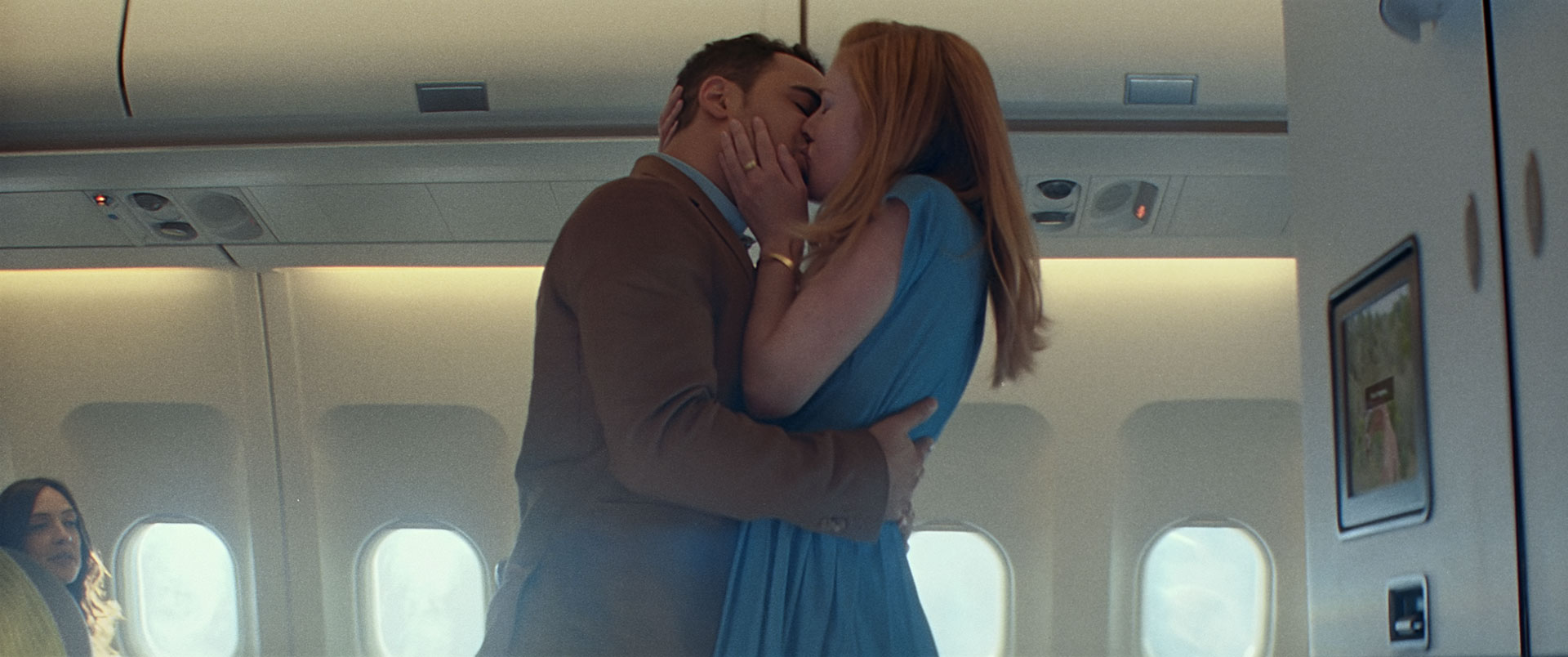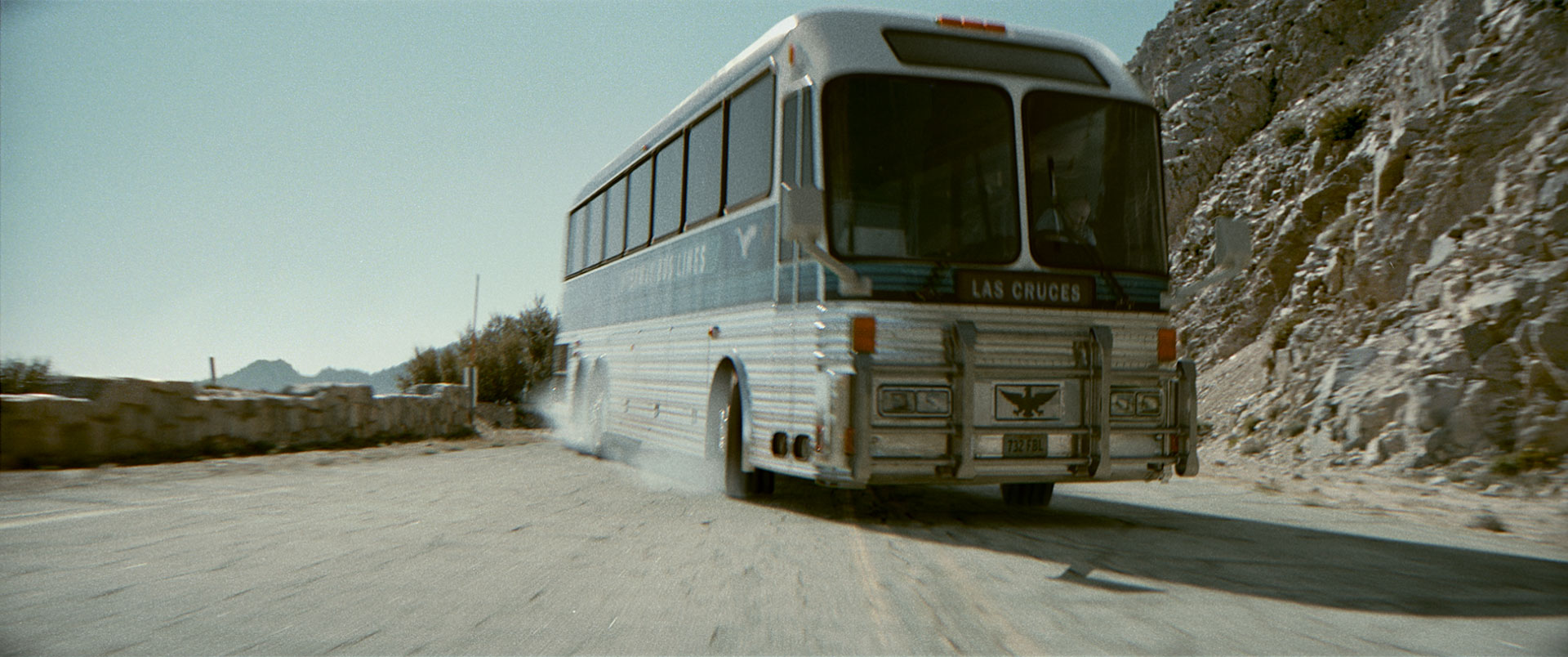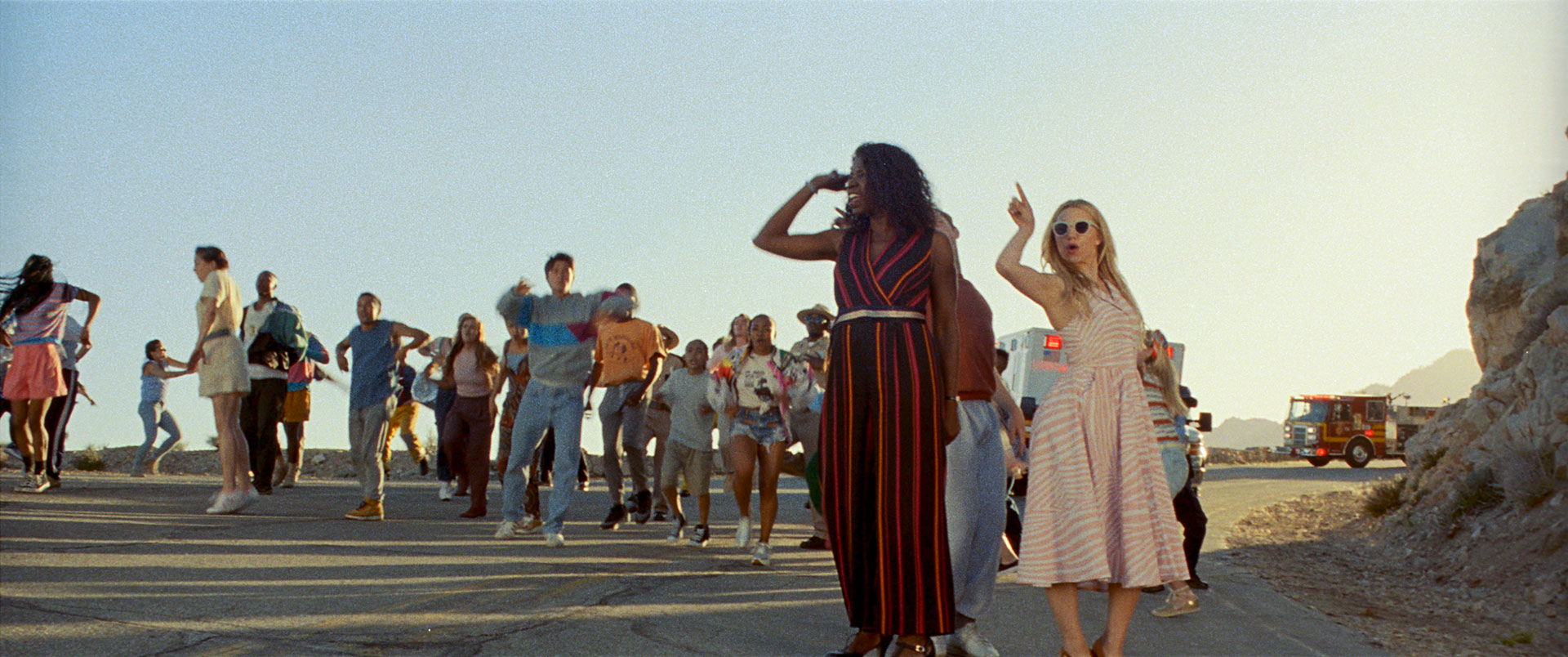How BBDO Crafted the Ultimate Plot Twists for AT&T's Fun New Cinema Ads
When one movie genre just isn't enough
The big screen remains one of the great canvases for advertising creativity. And BBDO made the most of a recent AT&T brief for cinema spots—by crafting a pair of entertaining ads that are conceptually fun and executed to perfection.
The 90-second spots, which will run in theaters nationwide before movie previews (under AT&T’s new partnership with National CineMedia), rely on some pretty serious plot twists—which are better when you don’t see them coming.
So, check out the “Surprise” and “Bus” spots first before reading further:


“Surprise” breaks in theaters this month, while “Bus” will debut in August. Both films were directed by Daniel Wolfe, an up-and-coming British director whose best-known commercial work to date has been Honda’s “The Other Side” in 2014 and Hennessy’s “The Piccards” in 2016.
Muse spoke to BBDO New York creative directors Kevin Mulroy and Dan Kenneally about the AT&T work, including the tricky balance of making vignettes that are broad enough to quickly register as genres without veering into parody.
Visual and aural cues
“As with anything, it started with Dan and I trying to make each other laugh,” says Mulroy. “We were playing around with, what if the climactic scene of any genre were to play out, rather than having the credits roll? Where would that take you? Like if a romcom ended with Richard Gere sweeping Debra Winger off in his arms. Eventually, he’s going to say, ‘I’ve got to put you down,’ and she’s like, ‘Alright, now what?'”
For maximum contrast, they chose polar-opposite genres to pair up each spot. In “Surprise,” romcom leads to horror. In “Bus,” a suspense thriller suddenly becomes a musical. To make both ends of the films believable, they used a number of tricks, including visual and aural cues, to help the viewer along.
In “Surprise,” a lot rests on the music, composed by Atticus Ross (an Oscar winner for his score for 2010’s The Social Network), and on the changing color palette, handled by telecine artist Simon Bourne of Framestore.
“We leaned into a romcom, Bridesmaids treatment with the color, and with Atticus, just a romantic, sweeping song,” says Kenneally. “Those different tools really help bring the captive audience in even further.”
The transition to the new genre is gradual, particularly in “Surprise,” making for a fun no-man’s-land for the viewer in the middle.
“It was important to us to have this limbo period where the viewer doesn’t exactly know where this thing’s going,” says Mulroy. “In ‘Surprise,’ we’ve got a score that works for romcom, and then elements of that score slowly fall away. And we start to shift the color palette subtly in the middle. It becomes sort of a non-genre, and we loved settling into that for a second so it feels almost confusing.”
One tricky balance was making the first genre in each spot register quickly, without being cartoony.
“We talked a lot about that early on with Daniel Wolfe, our director,” says Mulroy. “We had to use some of the clichés without going pastiche. We didn’t want to spoof them, necessarily. You need to ground the viewer in the genre and make them think this is what they’re watching. … That makes the rug pull work so much harder when you flip to its polar opposite.”
Narrative details
Wolfe brought boundless energy and enthusiam to the project.
“We already knew he had the chops, based on his previous work,” says Mulroy. “But during the preproduction process, he brought almost an encyclopedic knowledge of all four genres that really impressed us. And he added little narrative elements to each story that could be drawn from one genre to the next and connected them in a seamless way. That’s what we loved about his treatment. On top of that, his attention to detail was just off the charts.”
A good example of a narrative element that Wolfe added—the kid bouncing the ball at the beginning of “Bus,” which ratchets up the tension and ends up being the seemingly random element that eventually leads to the crash.
“Surprise” relies more on dialogue.
“We loved the idea of talking about how strange what just happened was, in the dialogue,” says Mulroy. “Everybody just sort of accepts the trope that she’s able to flag down the plane and stop it. So, once we’re in the car, there’s this moment of quiet, and then the guy starts asking, ‘How exactly did you do that?’ ‘How were you able to get on the runway?’ Just laying bare the ridiculousness of that trope was a fun bit to play with.”
The horror section had to be credible, too. And indeed, it’s legitimately freaky—thanks largely to visual effects company Kevin, which turned the female lead into a zombie.
In terms of casting, it was important to use actors who’ve appeared in entertainment content, not just commercials. The male lead in “Surprise,” for example, has been in HBO shows and in features.
“We wanted the viewer, in the back of their minds, to think, ‘I’ve seen that guy somewhere,'” says Mulroy. “You really need to buy that the person on the screen belongs on the big screen.”
The biggest challenges
It was a challenging eight-day shoot for the two films, roughly half on location and half on a stage. “Bus” in particular was a huge production. They used a full-size bus on a gimbal dangling over a fake cliff. Most of the choreography within the bus happened on a stage, with the off-the-bus choreography shot in the mountains of California.
Oddly enough, the scale of the production wasn’t the toughest part of “Bus.”
“We may have underestimated how difficult it is to write a song,” admits Kenneally. “It took a week to land on those lines. You may look at those lines and think, ‘Ah, they’re not the most impressive things in the world,’ but we poured our heart and soul into them. We give a lot of credit to Daniel, because he was supportive of the timeline and gave us a lot of time to really craft the lines.”
Also, as large as the canvas seems, it was tough to fit everything into 90 seconds.
“It goes faster than we thought it was going to,” says Mulroy. “We wrote both spots a little long. Then we found ourselves cutting back, cutting back, cutting back, to the bare bones of what we needed to tell the story. But we found that the more we streamlined it, the better it was.”
Thanks to AT&T’s partnership with National CineMedia—brokered by AT&T’s media agency, Hearts & Science—the spots will get plenty of viewings before movie previews nationwide in the coming months.
“So far we’ve gotten a pretty good reception,” says Kenneally. “Hopefully that continues!”
CREDITS
AT&T
NCM Cinema
Surprise :95
Bus :90
Creative Agency: BBDO
Chief Creative Officer BBDO Worldwide: David Lubars
Chief Creative Officer BBDO New York: Greg Hahn
Group Executive Creative Director: Matt MacDonald
Executive Creative Directors: David Povill, David Cuccinello
Creative Directors: Kevin Mulroy, Dan Kenneally
Group Executive Producer: Julie Collins
Executive Producer: Jessica Coccaro
Director of Integrated Production: David Rolfe
Business Manager: Ashley Lipham
EVP, Managing Director: Doug Walker
EVP, Managing Director: Rachel Nairn
SVP, Senior Director: David McKenzie
Account Supervisor: Allie Knill
SVP, Director of Project Management: Colin Vidika
Head of Integrated Planning, EVP: Angela Jones
Communications Planning Director: Mac Russell
Media Agency: Hearts & Science
President, Hearts BBDO Team, AT&T: Ralph Pardo
Hearts & Science, Group Director
OOH Investment: Vanessa Hartley
Hearts & Science, Supervisor
OOH Investment: Kat Hamilton
Hearts & Science, Media Director: Andres Torrente
Hearts & Science, Brand Director: Tim Switzer
Production Company: SomeSuch X Anonymous
Founding Partner: Tim Nash
Executive Producer: Nicky Barnes
Director: Daniel Wolfe
Line Producer: Tom Martin
Director of Photography: Tom Townend
Editorial Company: Cosmo Street | Trim Editorial
Executive Producer: Maura Woodward
Head of Production: Anne Lai
Editor: Tom Lindsay
Assistant Editors: Alex Morales, Ben Elkaim, Habin Semaan
Telecine Company: Framestore London
Telecine Artist: Simon Bourne
Producer: Chris Anthony
Visual Effects Company: Kevin
VFX Supervisor/2D Lead: Tim Davies
Executive Producer: Sue Troyan
Producer: Jami Schakel
Music /Sound Design Company: Barking Owl Sound
Composer “Surprise”: Atticus Ross
Composers “Bus”: Atticus Ross + Jacob Plasse
Sound Designer : Morgan Johnson
Executive Producer/Creative Director: Kelly Bayett
Audio Finishing: Sonic Union
Engineer: Steve Rosen, Mike Marinelli, Paul Weiss
Producer: Justine Cortale, Pat Sullivan











